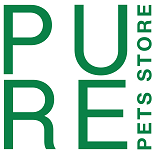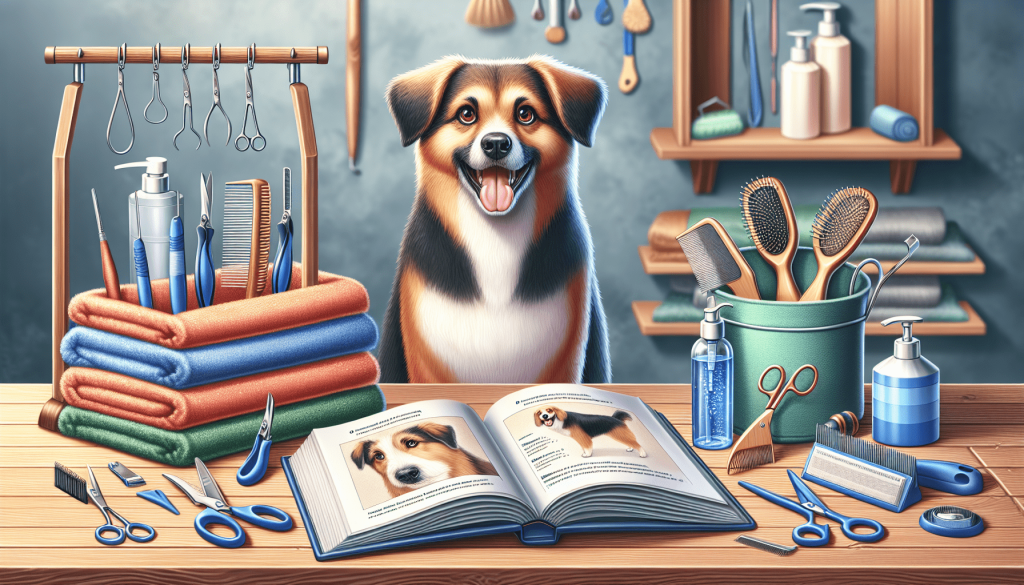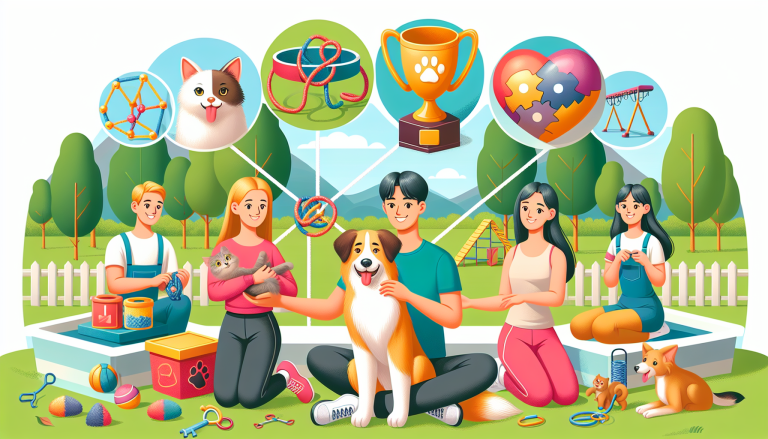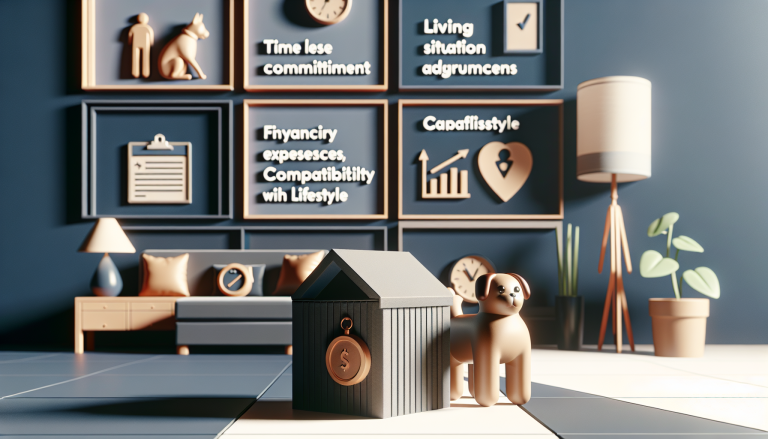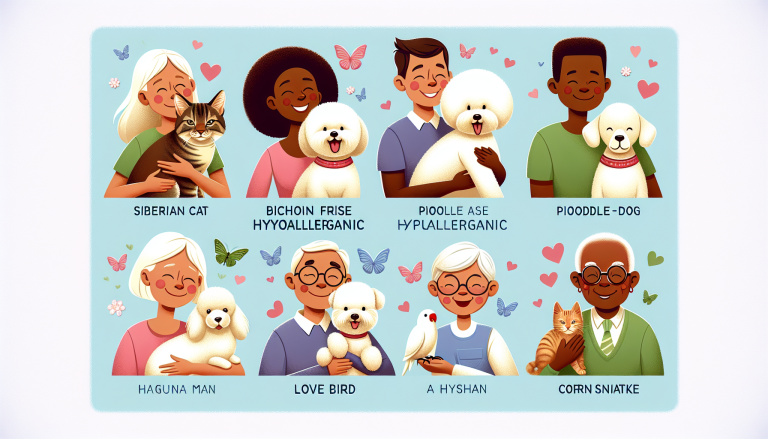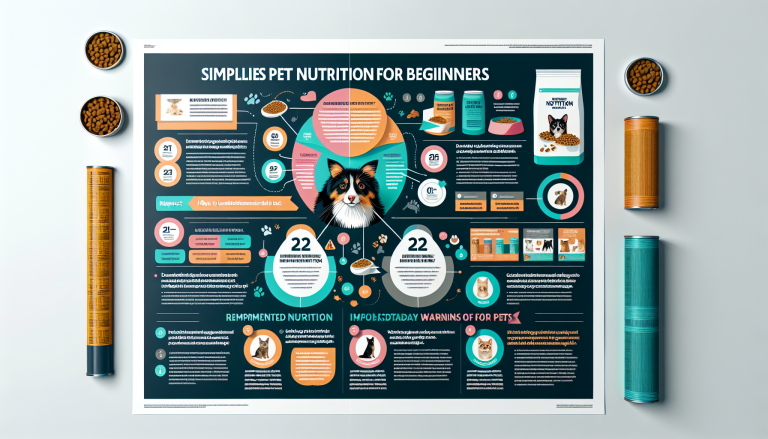If you’ve ever found yourself on the hunt for grooming tips for your furry friend, then look no further. The ultimate guide to grooming your dog at home is here to save the day! From brushing their luscious locks to keeping those nails trim, this comprehensive guide has got you covered. With easy-to-follow steps and helpful suggestions, you’ll become a pro in no time. Get ready to show off your pup’s shiny coat and dashing smile, all from the comfort of your own home.
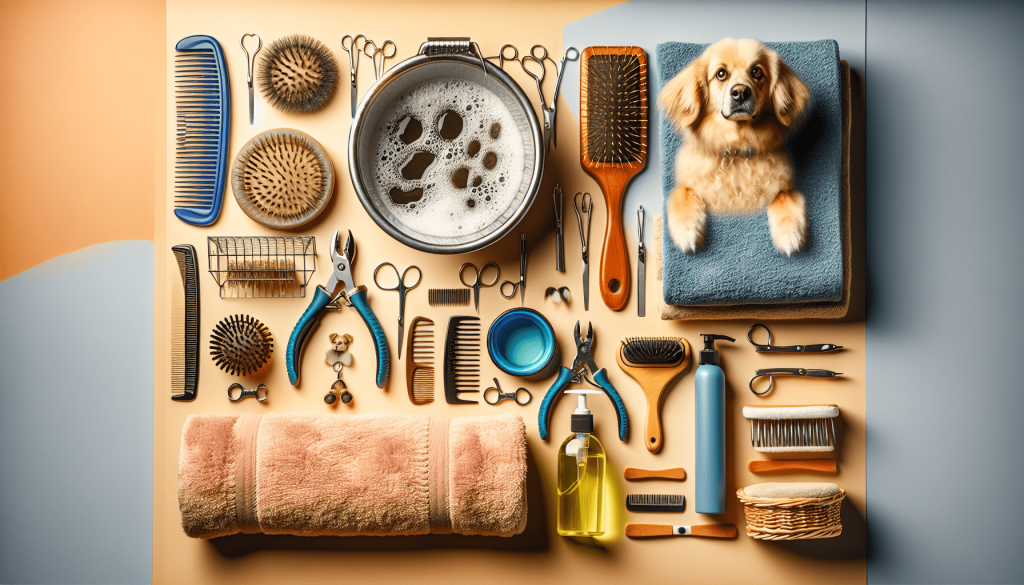
Table of Contents
ToggleTools for Grooming
Grooming Brush
A grooming brush is an essential tool for keeping your dog’s coat looking healthy and shiny. Different breeds require different types of brushes, so make sure to choose one that is suitable for your dog’s coat type. A slicker brush is great for removing tangles and mats, while a bristle brush is perfect for distributing natural oils and adding shine to the coat. Regular brushing not only keeps your dog’s coat looking great but also helps remove loose fur and prevents it from spreading in your home.
Nail Clipper
Trimming your dog’s nails is an important part of grooming. Long nails can be uncomfortable and even painful for your furry friend, so it’s crucial to keep them trimmed. Look for a nail clipper that is specifically designed for dogs. Guillotine-style clippers or scissor-style clippers are the most common types. Remember to have styptic powder on hand in case you accidentally cut the nail too short and it starts bleeding.
Ear Cleaning Solution
Cleaning your dog’s ears is essential for maintaining their overall health and preventing ear infections. Use a gentle ear cleaning solution specifically formulated for dogs. Avoid using cotton swabs or any sharp objects that could potentially damage their sensitive ears. Dampen a cotton ball or pad with the solution and gently wipe the ear flap and entrance. Remember not to insert anything deep into the ear canal, as it can cause harm.
Dog Shampoo
Regular bathing is crucial to keep your dog’s coat clean and free from dirt, debris, and odors. Choose a dog shampoo that is mild and specifically formulated for dogs. Avoid using human shampoos, as they can be too harsh for your furry friend’s sensitive skin. Before bathing, brush your dog’s coat to remove any tangles or mats. Wet their coat thoroughly, apply the shampoo, and massage it gently into their fur. Rinse thoroughly to remove all the shampoo and towel dry your dog afterward.
Toothbrush and Toothpaste
Just like humans, dogs need regular dental care to maintain healthy teeth and gums. Get a dog-specific toothbrush and toothpaste to clean your dog’s teeth. Introduce the toothbrush to your dog gradually, allowing them to sniff and get used to it. Hold your dog’s muzzle gently and lift their lips to expose their teeth. Brush in circular motions, focusing on both the outer and inner surfaces of their teeth. Reward your dog with praise or a small treat after each successful brushing session to make it a positive experience.
Preparing Your Dog for Grooming
Choose a Calm Environment
Before you start grooming your dog, it’s important to choose a calm and quiet environment. Dogs are sensitive to their surroundings, and a hectic or noisy environment can make them anxious and agitated, making the grooming process more challenging. Find a quiet room in your home where you can groom your dog without distractions or interruptions. Creating a calm environment will help your dog feel more relaxed and cooperative during the grooming session.
Start with Short Sessions
If your dog is new to grooming or easily gets stressed, it’s best to start with short grooming sessions and gradually increase the duration over time. This allows your dog to get used to the grooming process without overwhelming them. Begin with just a few minutes of grooming and gradually extend the sessions as your dog becomes more comfortable. Remember to always end each session on a positive note, offering rewards and praise for their cooperation.
Get Your Dog Familiar with the Equipment
Before you start grooming, take some time to familiarize your dog with the grooming tools. Let them sniff and investigate the brush, nail clippers, ear cleaning solution, and toothbrush before using them. This helps reduce any fear or resistance they may have towards these unfamiliar objects. You can also use treats or playtime as positive reinforcement to create a positive association with the grooming tools.
Reward and Praise
Positive reinforcement is key to successful grooming sessions. Throughout the grooming process, make sure to reward your dog with treats, verbal praise, and petting for their cooperation and good behavior. This positive reinforcement helps create a pleasant grooming experience for your dog and reinforces their good behavior. By associating grooming with positive rewards, your dog will be more willing to cooperate in the future.
Brushing Your Dog’s Coat
Select the Right Brush for Your Dog’s Coat
Choosing the right brush for your dog’s coat is essential to effectively remove tangles, mats, and loose fur. There is a wide variety of brushes available, including slicker brushes, bristle brushes, and undercoat rakes. Consult a professional groomer or your vet to determine the best brush for your dog’s specific coat type. For example, long-haired dogs may require a slicker brush, while short-haired dogs may benefit from a bristle brush.
Start at the Head and Work Your Way Down
When brushing your dog’s coat, it’s best to start at the head and work your way down towards the tail. This allows you to tackle any tangles or mats at the neck and chest area first before working on the rest of the body. Be gentle and patient during the brushing process, especially around sensitive areas such as the ears and belly. Use short, gentle strokes to avoid causing discomfort or pain to your dog.
Be Gentle and Take Your Time
Gentleness is key when brushing your dog’s coat. Avoid using excessive force or pulling on tangles and mats, as this can cause pain or discomfort for your furry friend. Take your time and be patient, especially if your dog is prone to anxiety or sensitivity during grooming. Slow and gentle brushing motions help remove loose fur and distribute natural oils, promoting a healthier coat overall.
Brush in the Direction of Hair Growth
To effectively brush your dog’s coat, always brush in the direction of hair growth. This helps prevent any unnecessary pulling or discomfort for your dog. Brushing against the hair growth can be painful and cause unnecessary stress. By following the natural direction of hair growth, you can remove tangles and mats more easily and without causing discomfort.
Pay Extra Attention to Tangles and Mats
Tangles and mats can form easily in your dog’s coat, especially in areas with longer hair. Take extra care and attention when encountering tangles and mats to prevent them from worsening and causing discomfort for your dog. Use your fingers or a detangling spray to gently loosen the tangles before carefully working through them with the brush. If the tangles are severe or too close to the skin, it’s best to seek assistance from a professional groomer.
Bathing Your Dog
Use Lukewarm Water
When bathing your dog, it’s important to use lukewarm water to avoid causing any temperature extremes that can make your dog uncomfortable. Cold water can be shocking for your furry friend, while hot water can burn their sensitive skin. Fill a bathtub or a large basin with lukewarm water before bringing your dog in for a bath.
Choose a Dog Shampoo
Selecting the right dog shampoo is crucial for a successful bath. Look for a mild and gentle shampoo specifically formulated for dogs. Avoid using human shampoos, as they can be too harsh for your dog’s sensitive skin and may cause irritation. If your dog has any skin conditions or allergies, consult your vet for recommendations on the best shampoo to use.
Wet Your Dog’s Coat Thoroughly
Before applying shampoo, make sure to wet your dog’s coat thoroughly from head to tail. Use a handheld showerhead or a pitcher to pour water gently over their body, making sure to reach all the areas. Wetting the coat beforehand helps dilute the shampoo and ensures even distribution when applied.
Massage the Shampoo into the Coat
Once your dog’s coat is wet, apply a small amount of shampoo and massage it into their fur, focusing on the neck, back, and belly. Be gentle during the application process, avoiding getting shampoo into their eyes, ears, or mouth. Massage the shampoo into a lather, working it through the coat to remove dirt and odors effectively.
Rinse Thoroughly
After massaging the shampoo into your dog’s coat, thoroughly rinse them off with lukewarm water. Take your time to ensure that all traces of shampoo are removed, as leftover shampoo can cause skin irritation and dryness. Rinse until the water runs clear and your dog’s coat feels squeaky clean.
Towel Dry Your Dog
After bathing, towel dry your dog to remove excess water. Use a soft, absorbent towel and gently pat their coat, starting with the head and working your way down to the tail. Avoid rubbing vigorously, as this can cause tangling and matting. If your dog has a long coat or tends to have damp fur even after towel drying, you can also use a hairdryer on a low, cool setting to complete the drying process.
Trimming Your Dog’s Nails
Choose a Suitable Nail Clipper
When it comes to trimming your dog’s nails, choosing the right nail clipper is crucial. There are several types available, including guillotine-style clippers, scissor-style clippers, and grinder tools. Consider your dog’s size, nail thickness, and your own comfort level before selecting a specific type. Consult with your vet or a professional groomer for recommendations if you’re unsure.
Have Styptic Powder on Hand
Accidents can happen while trimming your dog’s nails, so it’s important to have styptic powder on hand. Styptic powder helps stop bleeding by promoting blood clotting. In case you accidentally trim the nail too short and it starts bleeding, immediately apply the styptic powder to the nail tip to stop the bleeding. If the bleeding persists, contact your vet for further assistance.
Hold your Dog’s Paw and Examine the Nails
Before trimming your dog’s nails, gently hold their paw and examine each nail. Look for the quick, which is the sensitive part of the nail that contains blood vessels. It appears as a pinkish area inside the nail. Avoid cutting into the quick, as it can cause bleeding and pain for your dog. Trim only the tip of the nail, staying clear of the quick.
Trim Small Amounts at a Time
When trimming your dog’s nails, it’s always better to err on the side of caution and trim small amounts at a time. This allows you to gradually shorten the nail without risking cutting into the quick. If your dog has dewclaws, pay special attention to them, as they often require trimming as well. Take breaks between nails if your dog becomes anxious or stressed. It’s better to have multiple short sessions than to rush through the process and cause discomfort for your furry friend.
Avoid Cutting the Quick
Cutting into the quick can be painful for your dog and can lead to bleeding. To avoid this, remember to only trim the tip of the nail and stop when you see a pinkish area inside the nail. If you’re unsure about how much to trim, it’s always better to take off less rather than too much. If your dog has clear or white nails, the quick may be more visible, making it easier to identify and avoid. However, for dogs with darker nails, it can be more challenging to see the quick, so it’s important to exercise caution and trim gradually.
Cleaning Your Dog’s Ears
Choose a Gentle Ear Cleaning Solution
Cleaning your dog’s ears is an important part of grooming, as it helps prevent ear infections and keeps their ears healthy. Choose a gentle ear cleaning solution specifically formulated for dogs. Avoid using any harsh or abrasive substances that can irritate your dog’s ears. If your dog has a history of ear infections or ear problems, consult your vet for the best ear cleaning solution to use.
Dampen a Cotton Ball or Pad
To clean your dog’s ears, dampen a cotton ball or pad with the ear cleaning solution. Make sure it is slightly wet but not dripping. You can also use a clean, soft cloth or gauze if you prefer. Avoid using cotton swabs or any sharp objects, as they can cause damage to the delicate structures of your dog’s ears.
Gently Wipe the Ear Flap and Entrance
Starting with the outer ear, gently wipe the ear flap and entrance using the dampened cotton ball or pad. Hold the base of your dog’s ear to provide support and prevent any discomfort. Be gentle and avoid inserting the ball or pad too deeply into the ear canal to prevent injury. If you notice any redness, swelling, discharge, or a foul smell, it’s best to consult your vet, as these may be signs of an ear infection.
Do Not Insert Anything Deep into the Ear Canal
It’s important to note that you should never insert anything deep into your dog’s ear canal. The inner structures of the ear are delicate and can be easily damaged. If you suspect there may be a foreign object lodged in your dog’s ear or if your dog is experiencing ear discomfort, seek veterinary assistance rather than attempting to remove it yourself. A vet will have the necessary tools and expertise to safely and effectively address any issues within the ear canal.
Brushing Your Dog’s Teeth
Get a Dog-specific Toothbrush and Toothpaste
Keeping your dog’s teeth clean and healthy is essential for their overall well-being. Get a dog-specific toothbrush and toothpaste to effectively clean your dog’s teeth. Human toothpaste is not safe for dogs, as it often contains ingredients that can be toxic to them. Dog toothpaste comes in various flavors that are more appealing to dogs and is formulated to be safe if swallowed.
Introduce Your Dog to the Toothbrush Gradually
Introducing your dog to the toothbrush gradually is important to make the brushing process a positive experience. Start by letting your dog sniff and investigate the toothbrush, allowing them to become familiar with it. Then, gradually introduce the toothpaste, allowing them to taste it and associate it with a positive experience. Slowly progress to brushing a few teeth at a time, rewarding your dog with praise and treats throughout the process.
Hold Your Dog’s Muzzle and Lift the Lips
To effectively brush your dog’s teeth, gently hold their muzzle with one hand and lift their lips with the other. This allows you to access their teeth and gums more easily. Be gentle and avoid applying too much pressure, as this can cause discomfort for your dog. If your dog becomes anxious or resistant, take breaks and try again later. Gradually increase the duration of each brushing session as your dog becomes more comfortable.
Brush in Circular Motions
When brushing your dog’s teeth, use a dog-specific toothbrush or a soft-bristle brush and brush in circular motions. Pay attention to both the outer and inner surfaces of their teeth, focusing on areas where plaque and tartar tend to accumulate. Be thorough yet gentle to avoid any discomfort or injury to your dog’s gums.
Reward Your Dog for Cooperation
Rewarding your dog for their cooperation during tooth brushing sessions is essential to make it a positive and enjoyable experience for both of you. Offer praise, petting, and small treats throughout the process to reinforce their good behavior. This positive reinforcement helps your dog associate tooth brushing with a pleasant experience, making them more willing to cooperate in the future.
Trimming Your Dog’s Hair
Consult a Professional Groomer for Specific Breeds
Trimming your dog’s hair may require professional assistance, especially for breeds with specific coat types or intricate styles. Consulting a professional groomer is highly recommended to ensure that your dog’s hair is trimmed correctly and to prevent any potential mishaps. Professional groomers have the skills, experience, and knowledge to handle different coat types and styles, ensuring your dog’s safety and well-being during the grooming process.
Invest in Quality Clippers and Blades
If you decide to trim your dog’s hair at home, it’s important to invest in quality clippers and blades. Dogs’ hair differs from human hair, requiring specific tools designed for their specific needs. Look for clippers and blades specifically labeled for pet grooming. The quality of the clippers and blades can greatly affect the outcome of the trimming process, so opting for reliable and durable equipment is crucial.
Start with Clean and Dry Hair
When trimming your dog’s hair, make sure their coat is clean and dry. Trimming dirty or damp hair can cause the clippers to pull and snag, resulting in an uneven cut and discomfort for your dog. Brush their coat thoroughly before starting the trimming process to remove any tangles or mats. This helps the clippers glide smoothly through the hair for a more even and professional-looking trim.
Trim in the Direction of Hair Growth
To achieve a balanced and natural look when trimming your dog’s hair, always trim in the direction of hair growth. Trimming against the hair growth can result in an uneven and choppy appearance. Follow the natural flow of your dog’s hair, using steady and even strokes. Take your time, especially around sensitive areas such as the face, ears, and tail, to ensure a neat and symmetrical cut.
Be Careful with Sensitive Areas
Certain areas of your dog’s body may be more sensitive or delicate, requiring extra care and attention during the trimming process. The face, ears, paws, and tail are examples of sensitive areas that must be handled delicately. Pay close attention to these areas, using smaller clippers or trimmers to ensure precision and prevent accidentally nicking or cutting your dog’s skin. If you’re uncertain about trimming these areas, it’s best to seek professional assistance.
Dealing with Special Considerations
Grooming Long-Haired Dogs
Long-haired dogs require more frequent and thorough grooming to maintain the health and appearance of their coat. Daily brushing helps prevent tangles and matting and keeps their coat shiny. For long-haired dogs, consider investing in specialized tools such as a slicker brush, a dematting comb, and thinning shears. Regular trimming of the hair around the eyes, paws, and sanitary areas is also necessary to prevent discomfort and maintain cleanliness.
Grooming Short-Haired Dogs
Although short-haired dogs may not require as much grooming as their long-haired counterparts, regular brushing is still important to remove loose fur and distribute natural oils. A bristle brush or a curry comb can effectively remove dead hair and keep their coat looking healthy. Short-haired dogs may also benefit from occasional baths to keep their skin clean and free from dirt and debris.
Grooming Dogs with Skin Conditions
If your dog has a skin condition, it’s best to consult with your veterinarian before starting any grooming routines. Some skin conditions may require specific shampoos or treatments that are prescribed by a vet. Avoid using any products that can further irritate their skin or worsen the condition. Regular brushing and ear cleaning may still be necessary, but it’s important to take extra precautions and follow the guidance of your vet.
Grooming Senior Dogs
As dogs age, their grooming needs may change. They may become less flexible or have mobility issues, making it more challenging for them to tolerate grooming sessions. Older dogs may also develop more sensitive skin, so it’s important to use mild grooming products and be extra gentle during brushing and trimming. Consider shorter grooming sessions and provide plenty of breaks and comfort for your senior dog during the process.
Cleaning up After Grooming
Use a Vacuum or Lint Roller to Clean Hair
After grooming your dog, it’s common to find hair scattered around your home. To efficiently clean up the hair, use a vacuum cleaner equipped with a brush attachment or a lint roller. These tools help remove hair from furniture, carpets, and other surfaces. Regular vacuuming or using a lint roller can minimize the amount of loose hair and keep your home clean.
Wash and Dry Grooming Tools
Keeping your grooming tools clean is important to prevent the spread of bacteria and maintain their effectiveness. After each grooming session, wash the brushes, combs, and other tools with warm water and mild soap. Remove any hair or debris lodged in the bristles or teeth. Pat them dry with a clean towel or allow them to air dry completely before storing them in a clean and dry place.
Dispose of Nail Clippings Safely
When trimming your dog’s nails, it’s important to dispose of the nail clippings safely. The nail clippings can be sharp and potentially dangerous if left lying around. After each nail trimming session, collect the clippings and dispose of them in a sealed bag or container. This prevents accidental injuries and ensures a safe environment for both you and your dog.
Clean up Any Water Spills or Mess
After bathing your dog, there may be water spills or messes that need to be cleaned up. Wipe down any surfaces that may have gotten wet, such as floors or counters, using a towel or a mop. Remove any traces of shampoo or water to prevent slipping hazards. It’s also a good idea to clean the bathtub or basin used for bathing to remove any hair or residue left behind.
Grooming your dog at home can be a rewarding and bonding experience for both you and your furry friend. By following these tips and using the right tools, you can maintain your dog’s health, hygiene, and appearance in the comfort of your own home. Remember to always prioritize your dog’s comfort and well-being, and seek professional assistance when needed. Regular grooming sessions not only keep your dog looking their best but also contribute to their overall happiness and well-being. So grab your grooming tools, create a calm environment, and enjoy the grooming journey with your beloved pet!
